Sarah L. Johnson's Blog, page 84
December 21, 2015
Book review: Médicis Daughter: A Novel of Marguerite de Valois, by Sophie Perinot
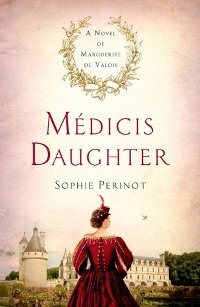 When you’re the daughter of Catherine de Médicis, Queen Mother and de facto ruler of France, you do as you’re told. After you’re introduced to court life, you avoid imitating other women’s flirtations, since it’s behavior unbecoming of your status. You acquiesce to potential marriage arrangements, even if it means a union with an unstable Spanish prince, or your unrefined Protestant cousin, Henri of Navarre. You must spurn the advances of the attractive Duc de Guise, even though your youthful heart yearns for warmth and understanding.
When you’re the daughter of Catherine de Médicis, Queen Mother and de facto ruler of France, you do as you’re told. After you’re introduced to court life, you avoid imitating other women’s flirtations, since it’s behavior unbecoming of your status. You acquiesce to potential marriage arrangements, even if it means a union with an unstable Spanish prince, or your unrefined Protestant cousin, Henri of Navarre. You must spurn the advances of the attractive Duc de Guise, even though your youthful heart yearns for warmth and understanding.Above all, you must stay loyal to your family. While you’re an unmarried woman under their protection, there’s no opting out.
Told in an unobtrusive present tense, Médicis Daughter follows Marguerite de Valois, youngest sister of France’s Charles IX, and the difficult path she traverses over a ten-year period, beginning with her childhood in the year 1562. During this time, the setting swirls with dark undercurrents as France is torn apart by religious wars between the ruling Catholics and those they term heretics, the Protestant Huguenots.
Marguerite makes some unwise decisions, but hers is a constrained life, and it understandably takes time for her to awaken to the reality of her situation and figure out where to place her trust. There’s as much political scheming, secret romance, and family dysfunction as any fan of royal fiction could want as Marguerite comes of age at the French court, slowly becoming less of an observer and more of a participant.
Given all the intrigue that surrounds Marguerite, her story could have been an over-the-top drama-fest, but Perinot keeps the atmosphere tightly controlled, which increases the level of tension. This suits the time and place. Character is key here, and the combination of Marguerite’s personality and circumstances makes her a complex individual indeed.
Perinot excels at illustrating the nuances of interpersonal relationships, and those she depicts – and their transformations over time – are worth beholding. These include Marguerite’s interactions with her next oldest brother, the Duc d’Anjou; with her would-be lover, the Duc de Guise; and with the King of Navarre, the cousin she finally agrees to marry. All of these men, incidentally, are named Henri, although this doesn’t cause confusion. Instead, Perinot plays upon this historical fact to craft some revelatory character-defining moments.
As one can guess from the title, the mother-daughter relationship sits at the heart of the book, and this is handled with finesse. Catherine de Médicis, who inspires both awe and fear, is a powerful antagonist. To round out her character, she’s granted moments of vulnerability, ones that hint at her deep-rooted motivations at the same time.
The novel’s ending, culminating at the St. Bartholomew’s Day Massacre, is both devastating and magnificent, with Marguerite courageously taking a stand. At this point, Marguerite’s life is far from over, but the decision to conclude the novel here makes for an extremely satisfying character arc.
Médicis Daughter: A Novel of Marguerite de Valois was published by Thomas Dunne Books, an imprint of St. Martin's Press, this month (hardcover, $26.99/C$31.50, 369pp). Thanks to the publisher for sending me a review copy.
Published on December 21, 2015 06:30
December 17, 2015
Bits and pieces
I have a few longer posts here as drafts, but nothing completed yet. Even though events are slowing down on campus, December 15th is the reviewers' deadline for the Historical Novels Review, so my inbox is overfull and demanding attention. In the meanwhile, here are links to some sites worth perusing.
The Historical Novel Society's guide to forthcoming historical novels for 2016 is getting longer all the time, with listings available through next August. It's compiled by me (for US titles) and Sarah Cuthbertson (UK titles). Also, the HNS guide to upcoming children's and YA titles for 2016 is even longer; Fiona Sheppard is its editor.
"The novel was coming along quite well, until I got to the foreskins." Take a read through Geraldine Brooks' December 11th article for the New York Times, in which she speaks about the process for writing The Secret Chord, which is set 3000 years ago. And how refreshing to hear a novelist state outright, in a newspaper, that "I write historical fiction."
Does winning a Goodreads Choice award create more awareness and influence sales? The Goodreads blog talks about this issue, with Kristin Hannah's The Nightingale, the 2015 winner in historical fiction, as an example.
For those who love romantic historical epics like The Thorn Birds, the Heroes & Heartbreakers blog has many reading suggestions. Check out the comments, too.
Parade Magazine has a roundup of historical novels in their 2015 holiday gift guide.
More reviews and previews will be coming up soon!
The Historical Novel Society's guide to forthcoming historical novels for 2016 is getting longer all the time, with listings available through next August. It's compiled by me (for US titles) and Sarah Cuthbertson (UK titles). Also, the HNS guide to upcoming children's and YA titles for 2016 is even longer; Fiona Sheppard is its editor.
"The novel was coming along quite well, until I got to the foreskins." Take a read through Geraldine Brooks' December 11th article for the New York Times, in which she speaks about the process for writing The Secret Chord, which is set 3000 years ago. And how refreshing to hear a novelist state outright, in a newspaper, that "I write historical fiction."
Does winning a Goodreads Choice award create more awareness and influence sales? The Goodreads blog talks about this issue, with Kristin Hannah's The Nightingale, the 2015 winner in historical fiction, as an example.
For those who love romantic historical epics like The Thorn Birds, the Heroes & Heartbreakers blog has many reading suggestions. Check out the comments, too.
Parade Magazine has a roundup of historical novels in their 2015 holiday gift guide.
More reviews and previews will be coming up soon!
Published on December 17, 2015 13:03
December 11, 2015
Dictator by Robert Harris: the courageous life and continuing relevance of Marcus Tullius Cicero
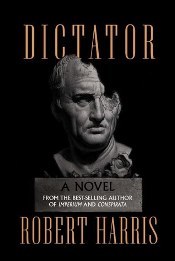 Following Imperium (2006) and Conspirata (2010), Harris offers this thrilling final volume of his trilogy about Cicero, ancient Rome’s most skilled orator. The novel opens as Cicero is forced into exile in 58 BCE, following the Catiline conspiracy. His story will powerfully stir the heart and mind, for it presents the coda to a life lived with intelligence and courage.
Following Imperium (2006) and Conspirata (2010), Harris offers this thrilling final volume of his trilogy about Cicero, ancient Rome’s most skilled orator. The novel opens as Cicero is forced into exile in 58 BCE, following the Catiline conspiracy. His story will powerfully stir the heart and mind, for it presents the coda to a life lived with intelligence and courage.A fierce defender of the Roman republic and the rule of law, Cicero struggles to promote his principles amid marital discord and increasingly volatile political circumstances. He’s flawed but entirely human as he makes several disastrous mistakes and is obliged to make compromises to serve a greater goal.
As before, his thoughts and exploits are rendered via the lucid narration of Tiro, his loyal secretary. Spanning 15 years, Tiro’s account covers significant ground, from the breakdown of the First Triumvirate through the civil war between Caesar and Pompey, Caesar’s dictatorship, and the blood-soaked chaos after his assassination. The cast is extensive, but the plotting is brisk, and Harris never loses sight of his themes' – or his protagonist’s – relevance for today.
Dictator will be published by Knopf on January 12th (hardcover, 416pp, $26.95). This review first appeared in the 12/15 issue of Booklist, which went online today. I hadn't read either of the first two books in the series, though always meant to get to them; fortunately, this third in the trilogy stood alone just fine. If you're an admirer of Colleen McCullough's Masters of Rome series, you'll want to put this on your list as well. The British publisher is Hutchinson, and the second book is called Lustrum in the UK.
Published on December 11, 2015 12:23
December 8, 2015
Book Review: Stephanie Thornton's The Conqueror's Wife
From an early age, Thessalonike of Macedon learns that the world is cruel, unfair, and not created for the likes of her – or anyone of the female sex. Still, despite the strictures placed upon them, she and the two other women who narrate The Conqueror’s Wife aren’t content to stay in the shadows and let the men in their lives direct their future.
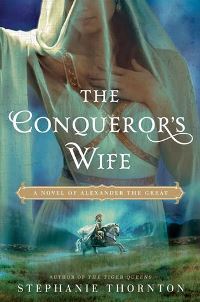 In her fourth novel to bring women from ancient times back into the spotlight, Stephanie Thornton follows a similar pattern to her earlier
The Tiger Queens
, about the female supporters of Genghis Khan who ensured his legacy. Here, the warrior in question is Alexander the Great, who ruled over an enormous land empire in the 4th century BC, spreading from Greece to Persia to south Asia and beyond, by means of military conquest.
In her fourth novel to bring women from ancient times back into the spotlight, Stephanie Thornton follows a similar pattern to her earlier
The Tiger Queens
, about the female supporters of Genghis Khan who ensured his legacy. Here, the warrior in question is Alexander the Great, who ruled over an enormous land empire in the 4th century BC, spreading from Greece to Persia to south Asia and beyond, by means of military conquest.
Besides Thessalonike, Alexander’s half-sister, who learns to fight while staying behind at home, the female viewpoints are those of Drypetis, the plain, outspoken younger daughter of King Darius of Persia, who becomes one of his captives after her father’s defeat; and Roxana of Balkh, a beautiful minor noblewoman who uses all her wiles to escape a bad family situation and seize power of her own.
Also included is the perspective of Hephaestion, Alexander’s boyhood companion, general, and occasional lover, who knows him better than anyone but sometimes fails to temper his excesses. Given Alexander's personality, it isn't likely anyone could. Hephaestion’s is a valuable viewpoint to have, since it brings readers front and center into Alexander’s army campaigns and victories, plus the athletic games held afterward in celebration.
Unlike Genghis Khan (Temujin) in Tiger Queens, Alexander has a more elusive presence on the page here; but this is probably wise. As the narrative makes clear, getting close to him is risky, and Thornton doesn’t downplay the price that Alexander’s enemies and allies pay for being in thrall to his ambitions. Undeniably brutal in places, deeply romantic in others, the novel is well-paced as it covers significant ground, both geographical and emotional. (One minor issue: the love-hate relationships between two pairs of would-be lovers felt rather similar.)
From the arena at Aigai in Macedon, where Alexander’s fate is set in motion, to the opulent throne room of Persepolis, abundant in both wealth and in misfortune, the story places readers into the midst of Alexander’s world. It’s highly recommended for readers who like their historical fiction colorful, vigorous, and populated by tough women who lived life at full volume.
The Conqueror's Wife is published by NAL this month (trade pb, 496pp, $15.00). This review is part of a blog tour with Historical Fiction Virtual Book Tours; thanks to the author for providing me with an ARC.
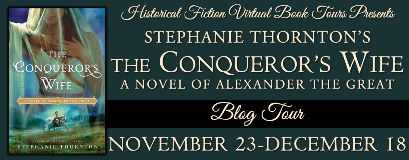
 In her fourth novel to bring women from ancient times back into the spotlight, Stephanie Thornton follows a similar pattern to her earlier
The Tiger Queens
, about the female supporters of Genghis Khan who ensured his legacy. Here, the warrior in question is Alexander the Great, who ruled over an enormous land empire in the 4th century BC, spreading from Greece to Persia to south Asia and beyond, by means of military conquest.
In her fourth novel to bring women from ancient times back into the spotlight, Stephanie Thornton follows a similar pattern to her earlier
The Tiger Queens
, about the female supporters of Genghis Khan who ensured his legacy. Here, the warrior in question is Alexander the Great, who ruled over an enormous land empire in the 4th century BC, spreading from Greece to Persia to south Asia and beyond, by means of military conquest. Besides Thessalonike, Alexander’s half-sister, who learns to fight while staying behind at home, the female viewpoints are those of Drypetis, the plain, outspoken younger daughter of King Darius of Persia, who becomes one of his captives after her father’s defeat; and Roxana of Balkh, a beautiful minor noblewoman who uses all her wiles to escape a bad family situation and seize power of her own.
Also included is the perspective of Hephaestion, Alexander’s boyhood companion, general, and occasional lover, who knows him better than anyone but sometimes fails to temper his excesses. Given Alexander's personality, it isn't likely anyone could. Hephaestion’s is a valuable viewpoint to have, since it brings readers front and center into Alexander’s army campaigns and victories, plus the athletic games held afterward in celebration.
Unlike Genghis Khan (Temujin) in Tiger Queens, Alexander has a more elusive presence on the page here; but this is probably wise. As the narrative makes clear, getting close to him is risky, and Thornton doesn’t downplay the price that Alexander’s enemies and allies pay for being in thrall to his ambitions. Undeniably brutal in places, deeply romantic in others, the novel is well-paced as it covers significant ground, both geographical and emotional. (One minor issue: the love-hate relationships between two pairs of would-be lovers felt rather similar.)
From the arena at Aigai in Macedon, where Alexander’s fate is set in motion, to the opulent throne room of Persepolis, abundant in both wealth and in misfortune, the story places readers into the midst of Alexander’s world. It’s highly recommended for readers who like their historical fiction colorful, vigorous, and populated by tough women who lived life at full volume.
The Conqueror's Wife is published by NAL this month (trade pb, 496pp, $15.00). This review is part of a blog tour with Historical Fiction Virtual Book Tours; thanks to the author for providing me with an ARC.

Published on December 08, 2015 05:00
December 4, 2015
Sun, sand, and secrets: Summer at Hideaway Key by Barbara Davis
Since the themes and cover for the previous book reviewed here were pretty dark, here's one with a more summery setting. That said, it does tackle serious issues.
For the core of her third novel, Barbara Davis takes a staple of historical women’s fiction – the discovery of an old diary – and grafts around it an engrossing story about sibling jealousy, the difficult path to self-discovery, and the importance of understanding the past and taking chances on the future.
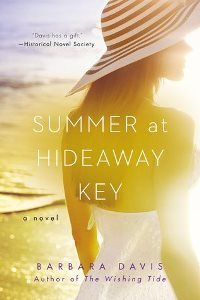 In 1995, following her father’s death, wealthy fashion designer Lily St. Claire is surprised to discover he left her a beach house, Sand Pearl Cottage, on the small island of Hideaway Key on the Gulf Coast of Florida. The house once belonged to Lily’s beautiful lookalike aunt, Lily-Mae Boyle, the long-estranged older sister of Lily’s mother, Caroline. Determined to learn more about her family, despite her mother’s firm disapproval, Lily takes up residence in the cottage, sorts through her late aunt’s belongings, and makes connections with many of the locals – including her nearest neighbor, Dean Landry, a hunky architect whose friendly overtures she doesn’t fully trust: he wants to buy her cottage and tear it down for a new building project.
In 1995, following her father’s death, wealthy fashion designer Lily St. Claire is surprised to discover he left her a beach house, Sand Pearl Cottage, on the small island of Hideaway Key on the Gulf Coast of Florida. The house once belonged to Lily’s beautiful lookalike aunt, Lily-Mae Boyle, the long-estranged older sister of Lily’s mother, Caroline. Determined to learn more about her family, despite her mother’s firm disapproval, Lily takes up residence in the cottage, sorts through her late aunt’s belongings, and makes connections with many of the locals – including her nearest neighbor, Dean Landry, a hunky architect whose friendly overtures she doesn’t fully trust: he wants to buy her cottage and tear it down for a new building project.
Beginning in 1953, Lily-Mae’s journal reveals the story of her difficult adolescence and the adult decisions that led to her renown as a cover model and, much later, her dying alone in her bed at Hideaway Key. With a heartfelt tone revealed through her rural Tennessee twang, Lily-Mae tells how her Mama abandoned her and Caroline at a poor farm after their money ran out. Lily-Mae’s resolve to do whatever it takes to protect her younger sister, even to her own detriment, instills in Caroline a resentment that festers throughout their lives.
Both tales are flawlessly interwoven, each enhancing the plot and themes revealed in the other, and they exert a similar emotional pull. The ending is perfect – have some tissues ready – and the glorious depictions of the Florida beaches will satisfy anyone who’s ever dreamed of an idyllic tropical haven.
Summer at Hideaway Key was published by NAL Accent in August ($16.00/C$20.00, trade pb, 386pp). This review first appeared in November's Historical Novels Review.
For the core of her third novel, Barbara Davis takes a staple of historical women’s fiction – the discovery of an old diary – and grafts around it an engrossing story about sibling jealousy, the difficult path to self-discovery, and the importance of understanding the past and taking chances on the future.
 In 1995, following her father’s death, wealthy fashion designer Lily St. Claire is surprised to discover he left her a beach house, Sand Pearl Cottage, on the small island of Hideaway Key on the Gulf Coast of Florida. The house once belonged to Lily’s beautiful lookalike aunt, Lily-Mae Boyle, the long-estranged older sister of Lily’s mother, Caroline. Determined to learn more about her family, despite her mother’s firm disapproval, Lily takes up residence in the cottage, sorts through her late aunt’s belongings, and makes connections with many of the locals – including her nearest neighbor, Dean Landry, a hunky architect whose friendly overtures she doesn’t fully trust: he wants to buy her cottage and tear it down for a new building project.
In 1995, following her father’s death, wealthy fashion designer Lily St. Claire is surprised to discover he left her a beach house, Sand Pearl Cottage, on the small island of Hideaway Key on the Gulf Coast of Florida. The house once belonged to Lily’s beautiful lookalike aunt, Lily-Mae Boyle, the long-estranged older sister of Lily’s mother, Caroline. Determined to learn more about her family, despite her mother’s firm disapproval, Lily takes up residence in the cottage, sorts through her late aunt’s belongings, and makes connections with many of the locals – including her nearest neighbor, Dean Landry, a hunky architect whose friendly overtures she doesn’t fully trust: he wants to buy her cottage and tear it down for a new building project. Beginning in 1953, Lily-Mae’s journal reveals the story of her difficult adolescence and the adult decisions that led to her renown as a cover model and, much later, her dying alone in her bed at Hideaway Key. With a heartfelt tone revealed through her rural Tennessee twang, Lily-Mae tells how her Mama abandoned her and Caroline at a poor farm after their money ran out. Lily-Mae’s resolve to do whatever it takes to protect her younger sister, even to her own detriment, instills in Caroline a resentment that festers throughout their lives.
Both tales are flawlessly interwoven, each enhancing the plot and themes revealed in the other, and they exert a similar emotional pull. The ending is perfect – have some tissues ready – and the glorious depictions of the Florida beaches will satisfy anyone who’s ever dreamed of an idyllic tropical haven.
Summer at Hideaway Key was published by NAL Accent in August ($16.00/C$20.00, trade pb, 386pp). This review first appeared in November's Historical Novels Review.
Published on December 04, 2015 10:56
December 1, 2015
The dark side of the Middle Ages: Dana Chamblee Carpenter's Bohemian Gospel
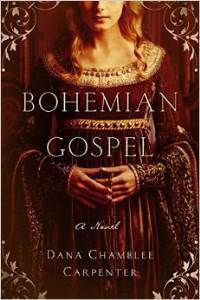 The averted eyes, the signs of the cross, the looks of awe and fear...
The averted eyes, the signs of the cross, the looks of awe and fear...Mouse is an unusual name for a young woman in 13th-century Bohemia, but then she's far from ordinary. She's intelligent and literate in several languages, yet unbaptized and forbidden to attend Mass. All are uncommon for her time. Raised in Teplá Abbey without a mother or father, she grows up knowing she has special talents – healing, for one – and is about to discover how far her power extends, a journey that takes her into the darkest realms of her world and of the human spirit.
At fourteen, Mouse saves the life of Ottakar, the Younger King of Bohemia, when he's brought to the abbey, gravely wounded by an arrow. The two form an immediate connection that endures despite their vast differences in social status and the danger they find themselves in – him, because a traitor wants to kill him, and her, because her supernatural abilities and closeness to the king elicit others' enmity. And her quest to discover more about her personal history proves to be the most treacherous path of all.
Bohemian Gospel is a strong debut, a historical fantasy novel taking place in a setting few readers will recognize or be comfortable in, which works to its advantage. The supernatural focus was much more prominent than I expected, given the publisher's blurb; this is far from a traditional historical novel.
The brutal court politics, full of bloody betrayals and deadly familial rivalries, call to mind the setting for Maurice Druon's Accursed Kings series. Ottakar comes to be known as the Golden and Iron King, which itself gives a hint at the book's atmosphere. I appreciated how period folklore was woven into the storyline (soul cakes, anyone?); likewise, the firm grip held by the church on regulating people's behavior.
Despite this, individual members of the clergy see something in Mouse worth protecting, which makes a refreshing change from stereotype. Father Lucas, her longtime mentor, calls her an andílek, or angel, and risks much to keep her alive and safe.
This made for an ideal read for All Hallows Eve, with its creepy suspense and unexpected-yet-apropos ending, but it should work well for any other time, especially if you'd like to take a stroll on the dark side of history. It was published on 11/16 by Pegasus ($25.95, hardcover, 367pp). Thanks to the publisher for sending me an ARC at my request.
Published on December 01, 2015 11:15
November 28, 2015
An eventful Victorian holiday abroad: Anne Perry's A Christmas Escape
Since we've moved past Black Friday, and the Christmas countdown has officially begun, I thought this would be a good time to focus on a historical novel that evokes the season. Don't expect a traditional cozy celebration here, though, for there's danger afoot.
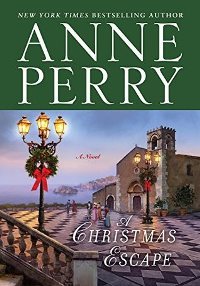 Perry’s thirteenth holiday novella takes a sojourn from her familiar realm of Victorian England over to the small Italian island of Stromboli, in the Tyrrhenian Sea. The steep mountainous landscape is picturesque and the weather temperate, even in early December, and Charles Latterly aims to spend a few weeks pulling his thoughts together after his wife’s recent death.
Perry’s thirteenth holiday novella takes a sojourn from her familiar realm of Victorian England over to the small Italian island of Stromboli, in the Tyrrhenian Sea. The steep mountainous landscape is picturesque and the weather temperate, even in early December, and Charles Latterly aims to spend a few weeks pulling his thoughts together after his wife’s recent death.
However, despite the beautiful locale and the scrumptious meals prepared by the hostelry’s owner, his stay is extremely volatile. First, most of the other guests – a vibrant teenager and her great-uncle, a grumpy man and his troubled wife, the colonel who tries to save her from potential abuse, and a famous novelist – knew each other from back home and don’t all get along. Also, the volcano sitting atop the village shows signs of reawakening.
There’s a lot of suspense and character development packed into this relatively short work. After one of the guests is found dead – a murder disguised as an accident – Charles realizes the suspect pool is very limited and seeks to find a motive. His growing fatherly rapport with the young woman, Candace Finbar, brings out a new side to his nature. Between knowing that a murderer is nearby and the danger posed by falling lava bombs, the atmosphere is incredibly tense. The notion of a “Christmas escape” turns out to have an unexpected double meaning.
Charles, of course, is the brother of Hester (Latterly) Monk, heroine of Perry’s Monk detective series. Charles has a recurrent secondary role in those novels, and is such an intriguing character here that he deserves the chance to take the lead once again.
A Christmas Escape was published by Ballantine this month in hardcover ($18.00, 158pp). That's a bit steep for a novella, but the price is heavily discounted online. This review first appeared in November's Historical Novels Review. Although this is the first of Perry's short holiday releases that I've read, I'll be back for more; it made for a pleasant break in between lengthier reads.
 Perry’s thirteenth holiday novella takes a sojourn from her familiar realm of Victorian England over to the small Italian island of Stromboli, in the Tyrrhenian Sea. The steep mountainous landscape is picturesque and the weather temperate, even in early December, and Charles Latterly aims to spend a few weeks pulling his thoughts together after his wife’s recent death.
Perry’s thirteenth holiday novella takes a sojourn from her familiar realm of Victorian England over to the small Italian island of Stromboli, in the Tyrrhenian Sea. The steep mountainous landscape is picturesque and the weather temperate, even in early December, and Charles Latterly aims to spend a few weeks pulling his thoughts together after his wife’s recent death.However, despite the beautiful locale and the scrumptious meals prepared by the hostelry’s owner, his stay is extremely volatile. First, most of the other guests – a vibrant teenager and her great-uncle, a grumpy man and his troubled wife, the colonel who tries to save her from potential abuse, and a famous novelist – knew each other from back home and don’t all get along. Also, the volcano sitting atop the village shows signs of reawakening.
There’s a lot of suspense and character development packed into this relatively short work. After one of the guests is found dead – a murder disguised as an accident – Charles realizes the suspect pool is very limited and seeks to find a motive. His growing fatherly rapport with the young woman, Candace Finbar, brings out a new side to his nature. Between knowing that a murderer is nearby and the danger posed by falling lava bombs, the atmosphere is incredibly tense. The notion of a “Christmas escape” turns out to have an unexpected double meaning.
Charles, of course, is the brother of Hester (Latterly) Monk, heroine of Perry’s Monk detective series. Charles has a recurrent secondary role in those novels, and is such an intriguing character here that he deserves the chance to take the lead once again.
A Christmas Escape was published by Ballantine this month in hardcover ($18.00, 158pp). That's a bit steep for a novella, but the price is heavily discounted online. This review first appeared in November's Historical Novels Review. Although this is the first of Perry's short holiday releases that I've read, I'll be back for more; it made for a pleasant break in between lengthier reads.
Published on November 28, 2015 07:14
November 25, 2015
An interview with Nicola Cornick about her new time-slip novel, House of Shadows
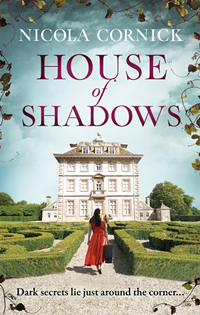 Time-slip novels are one of my favorite genres, so when presented with the opportunity to interview Nicola Cornick about House of Shadows, I quickly said yes. She's known for her well-researched historical romances, so her newest novel is a departure, and a very successful one.
Time-slip novels are one of my favorite genres, so when presented with the opportunity to interview Nicola Cornick about House of Shadows, I quickly said yes. She's known for her well-researched historical romances, so her newest novel is a departure, and a very successful one.House of Shadows intertwines the stories of characters from three historical periods: Elizabeth Stuart, the "Winter Queen" of Bohemia, and her supporter/champion, William Craven, in the 17th century; Lavinia Flyte, a 19th-century courtesan; and a modern-day woman, Holly Ansell, desperate to locate her brother, Ben, after he suddenly goes missing. Connecting all three of these strands are Ashdown House, a Dutch-style country house in Oxfordshire, and two objects with dark magical powers, a pearl and a jewelled mirror.
The historical details and the three intertwined storylines (it would be hard to pick a favorite) made for a rich reading experience, and there's a good amount of romance and unpredictable mystery to keep the pages turning. You can see an image of Ashdown on the novel's cover.
How did you first get involved with volunteering and serving as a tour guide at Ashdown House?
I had lived near Ashdown House for almost 10 years before I became involved with working as a tour guide there. I’d driven past the estate so many times and was intrigued by the little white house hidden away in the wood. I wondered about its history. But I was working full time and never seemed to be free when it was open. Then I gave up my day job to write and was looking around for some volunteering work to do. I saw an advertisement for guides to take visitors around Ashdown House and it seemed the perfect opportunity, almost as though it had been meant!
I enjoyed visiting Ashdown and the countryside surrounding it via the novel. Do you have any favorite aspects of the house or grounds to explore, or to tell people about?
Thank you, I am so glad that the book conveyed some of the beauty of the house and its landscape! There are so many things about Ashdown that I love to explore and to tell visitors about. The roof platform is magnificent and gives panoramic views of the surrounding countryside. It’s worth visiting for that view alone! The village of Ashdown is a hidden gem with Victorian Gothic-style stables and the original laundry and farmhouse. There’s so much to see in the woods as well including the old holloways, the sunken tracks along which the drovers used to take their animals up to graze on the high Downs. It’s an ancient and mysterious landscape.
One of your characters comments that the Winter Queen isn’t well-known in Britain, despite being James I’s daughter. Why do you think this is?
I think that Elizabeth of Bohemia isn’t well known in Britain probably because she spent so little of her life here. In Germany and Holland, where she lived for over 40 years, she is famous and there are all sorts of legends about her. Although she was a prominent figure in European culture and politics in the early 17th century it was seen as peripheral to what was happening in England. Plus she was a woman and to a certain extent I think her role has been written out of history.
The dedication to House of Shadows mentions your obsession with Ashdown and with William Craven. What about his life and character impresses you the most?
It is William Craven’s unswerving loyalty and honour that impresses me the most, I think. At a time when many men changed allegiance depending on the political situation he was utterly steadfast in his devotion to the Stuart cause. I admire that sort of integrity.
Did you have the opportunity to do research on site in Europe, in the places where Elizabeth Stuart and her husband once lived?
 author Nicola CornickYes! One of the most exciting things about writing the book was the research and the fact that I was able to visit both Heidelberg, where Elizabeth and Frederick lived when they were first married, and also The Hague. Although the Wassenaer Hof in The Hague is no longer standing it was possible to visit some houses of a similar era to get a real feel for the style of architecture and the interiors. I also found online a virtual recreation of Elizabeth and Frederick’s hunting lodge at Rhenen, which was fabulous!
author Nicola CornickYes! One of the most exciting things about writing the book was the research and the fact that I was able to visit both Heidelberg, where Elizabeth and Frederick lived when they were first married, and also The Hague. Although the Wassenaer Hof in The Hague is no longer standing it was possible to visit some houses of a similar era to get a real feel for the style of architecture and the interiors. I also found online a virtual recreation of Elizabeth and Frederick’s hunting lodge at Rhenen, which was fabulous!The two items which come to have dark powers, the Sistrin pearl and the Italian jewelled mirror – I’m assuming that both are fictional, but are they based on any real items, or on some aspect of Rosicrucian symbolism (or both)?
The mirror was a completely fictional creation but the Sistrin pearl is based on a real jewel. One day a jewellery specialist came to Ashdown to look at the pearls that feature in some of the portraits. She identified one particularly fine drop pearl as being in the Royal Collection and told me that Elizabeth of Bohemia had inherited it from her grandmother, Mary Queen of Scots. It is called the Bretherin and is said to be cursed. She also told me some other wonderful stories about the jewellery in the portraits. It was a gift for an author!
I did a lot of research into 17th century Rosicrucianism for the story as well since Elizabeth, Frederick and William Craven were all said to have been involved with the Knights of the Rosy Cross. Curiously, though, it is Ashdown House itself that bears the most striking resemblance to Rosicrucian symbolism. The cupola on the roof looks exactly like images of the “invisible Rosicrucian College” dating from the early 17th century.
The story of early 19th-century courtesan Lavinia Flyte felt very real (I even googled her name to see if she’d been an actual person!). Did anyone inspire her story?
Lavinia’s story came from another aspect of Craven family history. The first Earl of Craven of the Second Creation was the first lover of the notorious Regency courtesan Hariette Wilson, who gave him a pretty scathing write up in her memoirs. That was the seed for the idea of Lavinia and her diary. Jane Austen, a relative by marriage of the Earl, disapproved of the fact that Craven’s charm hid a want of moral character. She is said to have based the character of Willoughby in Sense and Sensibility on him.
Structuring this novel must have been incredibly complex! Had you planned from the beginning to include three time-period strands, rather than the more usual two?
I’m not a planner when I write so I didn’t set out to write three time period strands, rather they evolved as I went along. I began with the intention of writing Elizabeth and William’s story and I thought I would need a contemporary strand as well in which to unravel the historical mystery. Then Lavinia popped up and was very real to me, hence the first person sections from her memoirs.
That said, I did find the structure hugely complex and am only writing a dual timeline for my next book!
What about the time-slip genre appeals to you? Do you have any favorite time-slips that inspired your own writing?
I have always loved the timeslip genre and can trace the appeal back to when I first started reading it as a teenager: A Traveller in Time by Alison Uttley and Astercote by Penelope Lively were my childhood favourites, leading to Green Darkness and The House on the Strand. These days I particularly love Susanna Kearsley’s fabulous time slip novels and anything by Barbara Erskine, the Queen of the genre!
~
House of Shadows was published by Harlequin MIRA UK this month (£7.99, paperback, 476pp). UK and international readers (US included) can obtain copies at Book Depository. For more information, visit the author's website at http://nicolacornick.co.uk; she's also a contributor to the popular Word Wenches blog.
Published on November 25, 2015 06:00
November 22, 2015
A visual preview of American historical fiction for 2016
There was a time, a mere decade ago, when historical fiction set in the United States was considered unfashionable. Compared to their more glamorous British and European cousins, these books were dismissed as dreary and unexciting by many editors, agents, and readers. Fortunately, this isn't the case any more; American settings are flourishing. Here are 15 upcoming historical novels, all set to be published in 2016, that use American political and social history as a backdrop.

The close friendship and clandestine romantic relationship between Eleanor Roosevelt and AP reporter Lorena Hickok, which spans thirty years. Albert's previous biographical novel, A Wilder Rose, was one of my favorites of 2013. Persevero Press, February 2016.
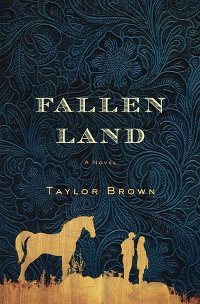
A literary love story set during the last year of the Civil War, featuring a young Irishman and a woman from the South who travel across the ravaged landscape of Georgia, fleeing bounty hunters. It's being mentioned in the same breath as Cold Mountain. St. Martin's, January 2016.
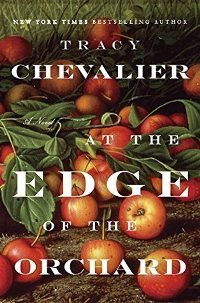
The story of a pioneer family in frontier Ohio at the time of Johnny Appleseed; Chevalier's second American-set historical novel after The Last Runaway. Viking, March 2016.
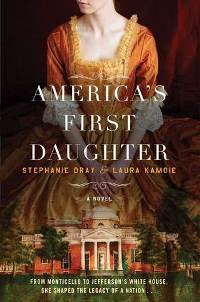
An epic about Martha "Patsy" Jefferson, oldest daughter of one of the Founding Fathers, and guardian of his controversial legacy. William Morrow, March 2016.
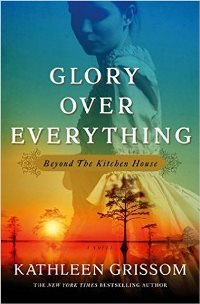
This sequel to The Kitchen House, a favorite read of mine from five years ago, is also a standalone novel that begins in Virginia in 1830, and features a young man passing as white whose secret threatens to be revealed. Simon & Schuster, April 2016.
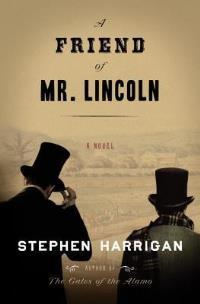
The setting of Harrigan's newest historical novel sits close to home for me: Springfield, Illinois, in the 1830s and '40s, as a young Abraham Lincoln comes into his own. Knopf, February 2016.
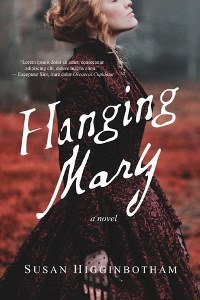
How much did Mary Surratt know about the plans for Lincoln's assassination? Susan Higginbotham's first novel set in the U.S. examines her story, basing her novel on primary sources. Sourcebooks Landmark, March 2016.
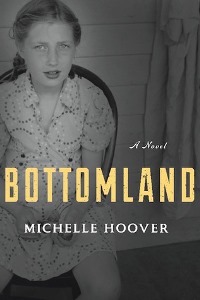
Hoover's second novel, following The Quickening, is likewise set in the U.S. Midwest, and deals with the aftermath of the mysterious disappearance of two German-American sisters during the WWI years. Black Cat, March 2016.
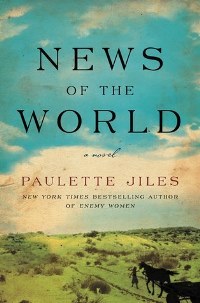
Re-introducing a girl formerly held captive by the Kiowa to white culture proves a traumatic experience, as Captain Jefferson Kyle Kidd discovers when he's asked to transport her to relatives in post-Civil War Texas. William Morrow, April 2016.
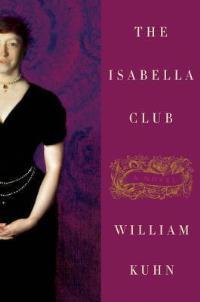
The close friendship between Isabella Stewart Gardner, society doyenne in Gilded Age Boston, and noted painter John Singer Sargent. Harper, July 2016.
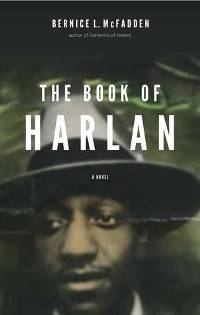
The story of an African-American musician, from his birth in WWI-era Georgia to his musical career in Harlem, his travels overseas, and his imprisonment with his best friend in Buchenwald. The author's website says the main character, Harlan, is based on her paternal grandfather. Akashic, May 2016.

Known for her lively epics spanning centuries of Texas life, Meacham offers a new 600-page novel centering on a wealthy heiress and a farm boy whose destinies intertwine in early 20th-century Texas. Grand Central, April 2016.
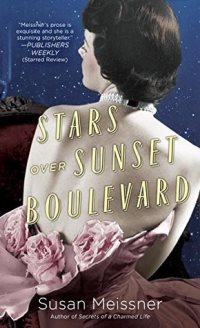
The story of two women's friendship in Golden Age Hollywood, and their adventures and desires in a glittering world where dreams can come true or falter. NAL, January 2016.
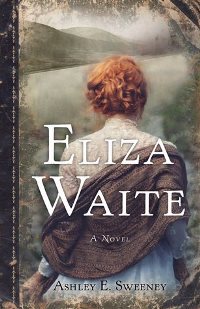
A woman seeking to reinvent herself in the raw, ambitious world of miners and fortune-seekers in 1898 Alaska finds her past catching up with her. She Writes Press, May 2016.
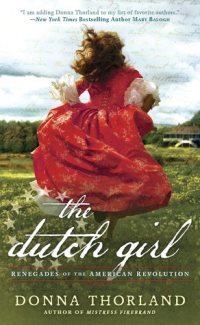
The latest in Thorland's Renegades of the Revolution series brings readers to New York in 1778, and to a young woman of Dutch extraction who takes the side of the rebels. NAL, March 2016.

The close friendship and clandestine romantic relationship between Eleanor Roosevelt and AP reporter Lorena Hickok, which spans thirty years. Albert's previous biographical novel, A Wilder Rose, was one of my favorites of 2013. Persevero Press, February 2016.

A literary love story set during the last year of the Civil War, featuring a young Irishman and a woman from the South who travel across the ravaged landscape of Georgia, fleeing bounty hunters. It's being mentioned in the same breath as Cold Mountain. St. Martin's, January 2016.

The story of a pioneer family in frontier Ohio at the time of Johnny Appleseed; Chevalier's second American-set historical novel after The Last Runaway. Viking, March 2016.

An epic about Martha "Patsy" Jefferson, oldest daughter of one of the Founding Fathers, and guardian of his controversial legacy. William Morrow, March 2016.

This sequel to The Kitchen House, a favorite read of mine from five years ago, is also a standalone novel that begins in Virginia in 1830, and features a young man passing as white whose secret threatens to be revealed. Simon & Schuster, April 2016.

The setting of Harrigan's newest historical novel sits close to home for me: Springfield, Illinois, in the 1830s and '40s, as a young Abraham Lincoln comes into his own. Knopf, February 2016.

How much did Mary Surratt know about the plans for Lincoln's assassination? Susan Higginbotham's first novel set in the U.S. examines her story, basing her novel on primary sources. Sourcebooks Landmark, March 2016.

Hoover's second novel, following The Quickening, is likewise set in the U.S. Midwest, and deals with the aftermath of the mysterious disappearance of two German-American sisters during the WWI years. Black Cat, March 2016.

Re-introducing a girl formerly held captive by the Kiowa to white culture proves a traumatic experience, as Captain Jefferson Kyle Kidd discovers when he's asked to transport her to relatives in post-Civil War Texas. William Morrow, April 2016.

The close friendship between Isabella Stewart Gardner, society doyenne in Gilded Age Boston, and noted painter John Singer Sargent. Harper, July 2016.

The story of an African-American musician, from his birth in WWI-era Georgia to his musical career in Harlem, his travels overseas, and his imprisonment with his best friend in Buchenwald. The author's website says the main character, Harlan, is based on her paternal grandfather. Akashic, May 2016.

Known for her lively epics spanning centuries of Texas life, Meacham offers a new 600-page novel centering on a wealthy heiress and a farm boy whose destinies intertwine in early 20th-century Texas. Grand Central, April 2016.

The story of two women's friendship in Golden Age Hollywood, and their adventures and desires in a glittering world where dreams can come true or falter. NAL, January 2016.

A woman seeking to reinvent herself in the raw, ambitious world of miners and fortune-seekers in 1898 Alaska finds her past catching up with her. She Writes Press, May 2016.

The latest in Thorland's Renegades of the Revolution series brings readers to New York in 1778, and to a young woman of Dutch extraction who takes the side of the rebels. NAL, March 2016.
Published on November 22, 2015 07:00
November 18, 2015
Phillip Margulies' Belle Cora: an American Moll Flanders tells all
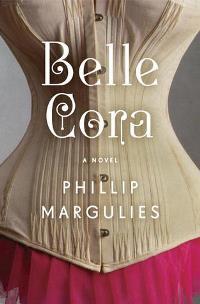 One expects certain things from a tell-all memoir. Juicy, scandalous details. Brash, larger-than-life personalities. A dramatic story that offers (or purports to offer) an intimate perspective on high-profile events.
One expects certain things from a tell-all memoir. Juicy, scandalous details. Brash, larger-than-life personalities. A dramatic story that offers (or purports to offer) an intimate perspective on high-profile events.Phillip Margulies' Belle Cora offers all this and more. Although this 600-page tome is actually a novel, not a real autobiography, its genesis was a real-life woman about whom little is known, an infamous madam from San Francisco's Gold Rush days. (Cora was her surname, which she obtained after marrying prominent gambler Charles Cora, legitimizing their longtime relationship. Or so the story goes.)
In addition, the writing quality elevates the novel above the dishy fare you might expect. Belle – or Arabella Godwin, Harriet Knowles, or one of the other names she assumes – has an educated mind and uses it. She narrates her riches-to-rags-to-riches (etc.) saga in a witty voice that combines the wisdom gained through a lifetime of hard-won experience with her observations on whatever segment of her life she’s relating.
Here’s the premise: following the devastating San Francisco earthquake of 1906, respected dowager Mrs. Frances Andersen decides to reveal the truth of her personal history, to the embarrassment of her heirs. It spans over 70 years, from a childhood of privilege in New York City’s Bowling Green neighborhood to her forced relocation to her resentful aunt’s farm near the Finger Lakes, her stint as a mill girl, her transformation into a high-class parlor house girl, then the shipboard voyage to California, heeding the call of adventure and riches.
Trouble arrives in the form of Belle’s cousin, Agnes, who becomes her perpetual rival and enemy – as does anyone falling into the category of “Good Christian Woman.” Throughout her life, Belle constantly veers between the paths of virtue and notoriety, the former while in pursuit of her true love, Jeptha Talbot, and the latter because it brings her wealth and power she can’t achieve otherwise. Reinventing herself becomes a forte, and so does illusion, both necessary in a scandalous profession where, she says, “we went to bed under the pretense that a forbidden romance was moving forward at impossible speed.”
The era’s social history is well detailed, from the peculiar Millerite movement (and its Great Disappointment) to the chaos of 1850s San Francisco, with its Vigilance Committees stockpiling power against the municipal government. The narrative bogs down in explaining all the details about the inner workings of city politics, but the aspects dealing with Belle’s emotional entanglements proceed at a cracking pace. Belle emerges triumphant, an American Moll Flanders who survives everything life throws at her and, in the end, has learned how to live, and to tell her story, without shame.
Belle Cora was published by Doubleday (hb) and Anchor (trade pb), with the latter appearing in October 2014 ($16.95, 608pp). I requested this via NetGalley some time ago and am embarrassed to have only gotten to it now; it's definitely worth the read.
Published on November 18, 2015 06:00



